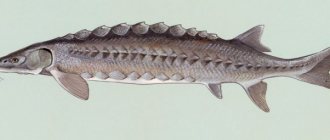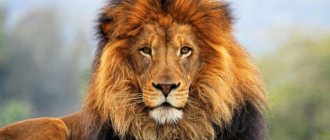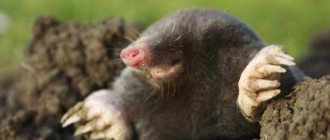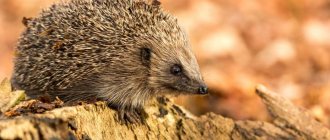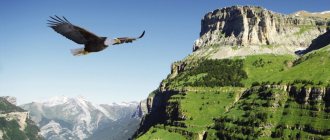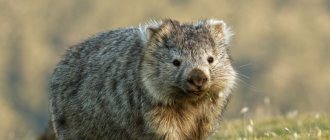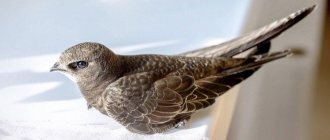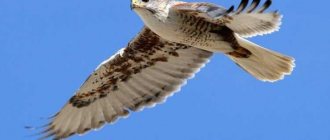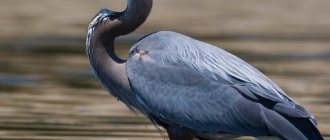: July 22, 2011, Treasures are not money, but good deeds, volume 39, no. 3
Until recently, in the Ob, one of the largest rivers on the planet, there was a fishery for sturgeon, a freshwater fish whose meat and caviar are literally worth their weight in gold. And although it has always been a delicacy on the table of Siberians, until the middle of the last century, catching large sturgeon in Ob waters was not uncommon. However, since the 1970s. the catch began to decline steadily. This is due to anthropogenic factors, such as regulation of the river bed, sand mining, poaching, and sewage pollution.
No one knows what the number of sturgeon in the Ob basin is today - after the Siberian sturgeon was listed in the Red Book of the Russian Federation in 1998, legal fishing (and therefore registration) ceased. It is obvious that the number of sexually mature individuals is currently extremely low, but studies have shown that the number of juveniles is not decreasing, which indicates the successful natural reproduction of the species.
Conducting comprehensive monitoring of the sturgeon population in the Ob basin will allow us to formulate an effective strategy for the protection of this valuable species, which will help increase its numbers
There was something rare, primitive not only in the size of the fish, but also in the shape of its body, from the soft, lifeless, worm-like whiskers hanging under the evenly planed head at the bottom, to the webbed, winged tail - the fish looked like a prehistoric lizard. V. Astafiev, “Tsar Fish”
In our difficult times, the enormous wealth of Siberia is often wasted thoughtlessly, without thinking about the future. Not so long ago, in the deep Siberian rivers, there was a fishery for sturgeon - the king fish, the most valuable of all freshwater fish in Russia. All over the world, sturgeon meat and caviar are literally worth their weight in gold. What is happening today? In 1998, this valuable species was listed in the Red Book. Is this a sufficient measure to preserve the sturgeon population?
The Ob is one of the greatest rivers on our planet. Its length exceeds 3.5 thousand km, and the basin area is about 3 million km2. Beginning as a turbulent stream at the confluence of the Biya and Katun, the Ob crosses the entire Western Siberia from south to north through steppes, forest-steppes, taiga and tundra. In its lower reaches, the river turns into a flat giant up to 7 km wide and, when it flows into the Gulf of Ob, it forms a delta with numerous branches and islands.
Such a large length of the river provides a variety of living conditions for its inhabitants. Among the latter, there are 52 species of fish (Popov, 2009), which is not so many for such a mighty river (for comparison: there are about 100 in the Amur, and more than 300 in the Yangtze). In terms of taste, representatives of whitefish and, of course, sturgeon are most valued - the Siberian sturgeon ( Acipenser baerii
) and sterlet (
Acipenser ruthenus
).
Sturgeon – description, structure, characteristics, photo. What does sturgeon look like?
Sturgeon is a large fish; the body length of large species can reach 6 meters. The maximum weight of a sturgeon is 816 kg (that’s how much the world’s largest white sturgeon weighed). However, on average, commercial fish weigh 12-16 kg.
The sturgeon skeleton consists of cartilaginous tissue, there are no vertebrae, and the notochord is preserved throughout the life of the fish. The body of the sturgeon is spindle-shaped, highly elongated, devoid of scales and covered with five rows of special scutes-bugs - diamond-shaped bony scales. One row runs along the ridge, on average containing from 10 to 19 scutes, a pair of lateral rows is composed of 25-56 elements, and two rows located on the belly usually consist of 7-15 scutes (depending on the species).
Photo by: Cacophony
Each species of sturgeon is characterized by an individual number of bone bugs. Each of these elements does not merge with the neighboring one and is covered with ring-shaped stripes. Also, small star-shaped bone plates and tubercles are randomly scattered throughout the sturgeon’s body.
The pectoral fin of the sturgeon is very hard, and its spine-like front ray is especially thick and pointed. The age of a sturgeon is often determined by the transverse cut of the front ray. The dorsal fin contains from 27 to 51 rays and is noticeably set back to the tail. The rays of the caudal fin extend beyond the end of the tail and bend around it on both sides. The anal fin may contain from 18 to 33 sharp rays. The swim bladder is well developed.
Photo by: Haplochromis
The head of the sturgeon is small, the snout is elongated, cone- or spatulate-shaped, sharp or slightly blunt. At its end there are 4 antennae, usually simple, devoid of fringe (except for the sterlet, which has fringed antennae). The sturgeon's mouth is retractable and has a lower location, which is due to the peculiarity of the fish's feeding on bottom organisms. The lips are quite fleshy, the lower lip of the fish is interrupted, and there are no teeth. In fry, small teeth grow, but then disappear.
The gill openings of sturgeons are the same as those of sharks, and in the process of evolution they are transformed into squirters. On their inner surface there are simple gill rakers, the number of which varies from 24 to 45 pieces.
Photo by: Haplochromis
The color of sturgeon is predominantly gray. The back can be light gray, grayish-black or light brown, shimmering green or yellow, the fins are usually dark gray. The fish have brownish sides; the belly of the sturgeon is white, gray with blue or grayish-yellow.
Hybrids
Shovelnoses
Currently, in some rivers of America and Russia you can find shovel-nosed representatives of the sturgeon family. They choose rivers with strong currents as habitats.
Although the eyes of this fish are completely covered with skin, it perfectly orients itself in space due to the sense of touch, which is provided by its long whiskers. And its flat snout helps it resist strong currents while staying afloat, as well as pectoral fins, the special shape of which allows them to act as suction cups.
There are the following types of shovelnose;
- ordinary;
- white;
- pseudopathonos.
The first two species reach a length of 1 meter and live mainly in Mississippi. The last representative is somewhat different from its previous relatives in the reduced number of bone plates and a shorter body, reaching a length of only 58 cm. However, another distinctive feature of the pseudoshovelworm is its habitat: it successfully lives and reproduces in Russia, choosing the Amu Darya River as its place of residence and Syrdarya.
It should be noted that these species do not go to other bodies of water to spawn, preferring to remain in their familiar environment.
Where does the sturgeon live?
Sturgeons can be freshwater, anadromous or semi-anadromous.
Reference: Migratory fish are fish that spend part of their lives in the sea and the other part in rivers. During spawning, they migrate from the sea to rivers or vice versa, which is less common.
Semi-anadromous fish are a group of fish that live in coastal zones of the seas (they do not go far into the sea) or in lake seas (Aral, Caspian). During spawning they migrate to the lower reaches of rivers.
The natural habitat of the sturgeon passes through the water bodies of the Northern temperate zone of Europe, northern Asia and North America.
Over millions of years of evolutionary development, the sturgeon has adapted well to living in a temperate climate zone; the fish tolerate low water temperatures well and can go hungry for a long time.
Sturgeon is a bottom-dwelling fish that swims at depths from 2 to 100 meters. Migratory species of sturgeon live in the coastal waters of seas and oceans, but their spawning occurs only in fresh river water, where the fish enter by swimming against the current and travel considerable distances. At the end of spawning, schools of fish go back to the sea. Semi-anadromous species of sturgeon live in the salty coastal waters of the seas and oceans and make spawning migrations to river mouths without going upstream. Most freshwater sturgeon species are not subject to long migrations, but lead a sedentary lifestyle in the waters of rivers and lakes, where they feed and reproduce.
Photo by: Engbretson Eric
Sterlet
A freshwater representative of the sturgeon family is found in the basins of the Baltic, Black, and Caspian seas, as well as in the Ob-Irtysh basin and the Yenisei.
Spawns in May in the beds of deep rivers with fast currents. Lays eggs on coarse sand and gravel. Sexual maturity occurs in males at 4-5 years, in females - at 7-8.
After spawning, valuable river fish begin to actively feed mainly on mosquitoes and midges.
At the beginning of summer, sterlet slowly descends to the lower reaches of rivers for wintering, coming out to sandbanks at night. The frequency of spawning is 2-4 years.
This type of sturgeon grows up to 40-60 cm, weighs from half a kilogram to two. The largest specimens are 15-16 kg. Life expectancy is about 30 years.
Features of sterlet:
- long narrow bow;
- fringed mustache;
- more than 50 side bugs.
The way of life of these sturgeons is also peculiar. Schools of fish roam from place to place, and survive the cold in pits at a depth of up to 25 meters. For wintering they use deep warm layers of water. Sometimes, in places that serve as temporary habitat, sturgeon are packed in several layers.
What does sturgeon eat?
Sturgeon feed on a variety of bottom organisms and fish, and the composition of the diet depends on the age of the fish and the specific habitat. The diet of an adult sturgeon consists of 85% protein food; the fish become especially voracious before spawning: they eat almost everything they can find on the bottom. These can be various crustaceans, mainly amphipods (ambipods or amphipods) and representatives of the order Cladocera. Insect larvae, mosquito larvae and caddis flies are eaten in large quantities, as well as mollusks, shrimp, mussels, worms and leeches. If the amount of protein food is limited, sturgeons eat algae. The fish diet includes sand lance, anchovies, herring, sprat, sprat, gobies, silver bream, pike perch, mullet and other small and medium-sized fish. Cases have been recorded of large sturgeons successfully hunting wild ducks.
Sturgeon fry feed primarily on zooplankton (daphnia, cyclops and bosmina), but are capable of eating very small crustaceans and worms. Juveniles eat insect larvae, snails, small shrimp and crustaceans. In the stomachs of the fry, many inedible particles are often found, probably absorbed from the muddy deposits.
During the breeding season and after spawning, the sturgeon practically stops eating or switches to a plant diet, but within a month the fish’s appetite is restored, and they go back to fattening.
Classification of sturgeon
According to the fishbase.org database, there are 17 species of sturgeon (data from 10/2016):
- Acipenser baerii – Siberian sturgeon;
- Acipenser brevirostrum – Blunt sturgeon;
- Acipenser dabryanus - Korean sturgeon;
- Acipenser fulvescens - Lake sturgeon;
- Acipenser gueldenstaedtii - Russian sturgeon;
- Acipenser medirostris - Green sturgeon (Pacific);
- Acipenser mikadoi - Sakhalin sturgeon;
- Acipenser naccarii - Adriatic sturgeon;
- Acipenser nudiventris - Thorn;
- Acipenser oxyrinchus - American Atlantic sturgeon;
- Acipenser persicus - Persian sturgeon;
- Acipenser ruthenus - Sterlet;
- Acipenser schrenckii - Amur sturgeon;
- Acipenser sinensis - Chinese sturgeon;
- Acipenser stellatus - Stellate sturgeon;
- Acipenser sturio - Atlantic sturgeon;
- Acipenser transmontanus - White sturgeon.
Fossil species of sturgeon:
- Acipenser albertensis † - Campanian stage of the Upper Cretaceous - early Paleocene 83.5-61.7 million years ago
- Acipenser eruciferus † - Campanian - Maastrichtian stages of the Upper Cretaceous 83.5-65.5 million years ago
- Acipenser molassicus†
- Acipenser ornatus†
- Acipenser toliapicus † - Lutetian stage of the Eocene 48.6-40.4 million years ago, Europe and northern Asia
- Acipenser tuberculosus†
Types of sturgeon, photos and names
The sturgeon genus includes 17 species of fish, most of which are listed in the Red Book with the status of critically endangered. Below is a description of some types.
- Siberian sturgeon ( Acipenser baerii)
Large fish up to 2 meters long. Sturgeon weighs up to 210 kg. Within the species, there are 2 varieties: sharp-snouted and blunt-snouted (regular) individuals. The general population of Siberian sturgeon is divided into freshwater and semi-anadromous forms, which inhabit the Siberian rivers from the Ob to the Kolyma, and also live in Lake Baikal and in eastern Kazakhstan in Lake Zaisan. Initially, the Siberian sturgeon species was divided into 4 subspecies:
- Yakut sturgeon sturgeon (lat. Acipenser baerii chatys, Drjagin, 1948), called khatys, which lives in Khatanga, Lena, Yana and Indigirka,
- Baikal sturgeon (lat. Acipenser baerii baicalensis, Nikolskii, 1896), inhabiting Lake Baikal and having a similar morphology to the North American sturgeon,
- East Siberian (long-snouted) sturgeon (lat. Acipenser baerii stenorrhynchus, Nikolskii, 1896);
- West Siberian sturgeon (lat. Acipenser baerii baerii, Brandt, 1869).
At the end of the 20th century, scientists proved that there are no significant differences between these subspecies, and the division became unacceptable. The diet of the Siberian sturgeon includes amphipods, insect larvae (mainly caddis flies and mosquitoes), as well as mollusks and various types of small fish, especially juvenile Baikal lobster. The Siberian sturgeon interbreeds freely with the Siberian sterlet, and their offspring are called koster. The Siberian sturgeon differs from the sterlet in the smaller number of lateral bugs (up to 50). The difference from the Russian sturgeon is that the Siberian species has fan-shaped gill rakers and a sharper snout in some individuals.
Taken from the site: www.rybarskyrozcestnik.cz
- White sturgeon (Acipenser transmontanus)
A very large species of sturgeon, second in size only to beluga and kaluga, and also the largest North American fish. Conservation status: Least Concern. The unofficial name of the fish is California white sturgeon. The fish has a fairly slender body, and the length of the largest sturgeon was 6.1 m with a mass of 816 kg, although the average weight of a sturgeon usually does not exceed 10-20 kg. The dorsal row contains from 11 to 14 scutes, the lateral rows consist of 38-48, the ventral scutes range from 9 to 12. The back and lateral surfaces are painted in grayish, light olive or grayish-brown shades, the belly and underside of the head are white. The sturgeon feeds on numerous mollusks, various crustaceans, lampreys and fish, including smelt. The white sturgeon is an anadromous fish that lives in the Pacific waters off the western coast of North America from the Aleutian Islands, located in the subarctic zone, to the state of California. Spawning grounds are located in brackish river mouths; some individuals migrate far up into fresh waters. Regular migrations into rivers for these fish are not necessarily associated with spawning. The most numerous populations of California sturgeon are found off the coast and in inland waters of Washington and Oregon states, southwest Alaska, California's San Francisco Bay, and the deltas of the Sacramento and San Joaquin rivers. Dams built on the Columbia and Snake rivers isolated part of the population in the river, and over time the fish acquired a freshwater form.
Photo by: Wald1siedel
- Russian sturgeon (Acipenser gueldenstaedtii)
One of the very first artificial breeding facilities, which is highly valued throughout the world for the exceptional gastronomic qualities of meat and caviar. Conservation status: critically endangered. It has a walk-through and residential form. The Russian sturgeon differs from other sturgeons by its blunt, short snout and antennae, which grow not near the mouth, but closer to the end of the snout. The maximum length of an adult Russian sturgeon is 2.36 m with a weight of 115 kg, but usually the weight of the sturgeon does not exceed 12-24 kg. The average length is 1.45 m. The Russian sturgeon has a grayish-brown back, gray sides with a yellow tint and a whitish belly. The dorsal row usually contains from 9 to 18 bugs, the lateral rows from 30 to 50, and the ventral rows no more than 7-12. Depending on the habitat, the diet of representatives of the species consists of amphipods (amphipods), mysids and worms. The fish diet includes sprat, herring, mullet and shemaya. Under natural conditions, Russian sturgeon produces hybrid offspring with beluga, sterlet, stellate sturgeon and thorn. Russian sturgeon is found in almost all major waterways of Russia. The main habitat of sturgeon is the basins of the Caspian, Black and Azov seas. Russian sturgeon goes to spawn in the Volga, Terek, Don, Kuban, Samur, Dnieper, Danube, Rioni, Mzymta, Psou and other rivers.
Photo by: Martin Chytry
- Amur sturgeon , also known as Schrenck's sturgeon (Acipenser schrenckii, Acipenser multiscutatus)
It forms freshwater (residential) and semi-anadromous forms, which are considered close relatives of the Siberian sturgeon. But, unlike the Siberian sturgeon, the gill rakers of the Amur species are not fan-shaped, but smooth and have one apex. Conservation status: critically endangered. The Amur sturgeon reaches 3 meters in length with a body weight of about 190 kg, but the average weight of a sturgeon usually does not exceed 56-80 kg. Representatives of the species have a pointed, elongated snout, which can be up to half the length of the head. The dorsal rows of the sturgeon contain from 11 to 17 bugs, the lateral rows from 32 to 47, the abdominal rows from 7 to 14. Amur sturgeons eat caddis and mayfly larvae, various crustaceans, lamprey larvae and small fish. The sturgeon lives in the Amur River basin, from the lower reaches and above, to Shilka and Argun; during the breeding season, schools go up the river to the Nikolaevsk-on-Amur region.
Photo by: Elena Lukina
- Atlantic sturgeon (Acipenser sturio)
A very large representative of the genus, the maximum size of which can reach 6 meters. The maximum recorded weight of the fish is 400 kg. The bugs of the Atlantic sturgeon are much larger than those of other sturgeons, and on the tail there are 3 pairs of large fused scutes. On the back of the sturgeon, oblique rows of small diamond-shaped plaques and from 9 to 16 large light bugs are clearly visible. The lateral rows contain from 24 to 40 scutes, on the belly from 8 to 14. The back of the fish is grayish-olive in color, the sides are much lighter, the belly is white. Sturgeon food includes small fish (anchovies, capelin and sand lance), as well as worms, crustaceans and mollusks. Initially, the Atlantic sturgeon was found off the coast of Europe in the Baltic, North, Mediterranean and Black Seas, as well as off the North American coast from Hudson Bay to South Carolina. Schools of fish went to spawn in the rivers Svir, Volkhov, Elbe, Oder, and Danube. Despite its impressive historical range, the Atlantic sturgeon is critically endangered and has been virtually extirpated in most areas. Currently, the Atlantic sturgeon is found only in the Black Sea and the Bay of Biscay, where no more than 300 individuals live. According to foreign sources, a small number of Atlantic sturgeon are found only in the Garonne River in France.
Taken from: itsnature.org
- Lake sturgeon (Acipenser fulvescens)
A large representative of the genus, biologically close to the blunt-nosed sturgeon. The maximum recorded length of adult fish is 2.74 m with a body weight of 125 kg. The body is colored black with gray or greenish-brown, the belly is white or yellowish. Basically, lake sturgeon feed on all kinds of bottom organisms; fish is consumed to a lesser extent. The lake sturgeon is a North American and Canadian resident found in the Great Lakes system, Lake Winnipeg, and the Mississippi, Saskatchewan, and St. Lawrence river basins. Conservation status: Least Concern.
Photo credit: Fungus Guy
- Sakhalin sturgeon (Acipenser mikadoi)
The rarest and rather poorly studied species, biologically identical to the green (Pacific) sturgeon. The average length of adult specimens reaches 1.5-1.7 m with a weight of 35-45 kg, the largest individuals grow up to 2 m in length and weigh about 60 kg. Adults have a large, blunt snout. The color of the Sakhalin sturgeon is greenish-olive, there are from 8 to 10 bugs on the back, from 27 to 31 on the sides, from 6 to 8 on the belly. The food of the Sakhalin sturgeon consists of various inhabitants of the muddy bottom: snails and other mollusks, insect larvae, small shrimp, crustaceans, and small fish. The species' range covers the cold waters of the Sea of Japan, the Sea of Okhotsk and the Strait of Tatar; the fish goes to the Tumnin River in the Khabarovsk Territory to spawn.
Taken from the site: www.ichthyo.ru
- Persian sturgeon , also known as South Caspian or Kura sturgeon (Acipenser persicus)
An anadromous species, a close relative of the Russian sturgeon. It is on the verge of extinction. The maximum size of a sturgeon is 2.42 m and weighs 70 kg. Representatives of the species have a large, long, slightly curved snout and a gray-blue back, blue sides with a metallic tint. The Persian sturgeon also differs from other species in having fewer bugs in each row. The diet of the South Caspian sturgeon consists mainly of benthos and small fish. The natural habitat of the fish is the middle and southern regions of the Caspian Sea; a small proportion of the population inhabits the northern regions of the Caspian Sea and is found along the Black Sea coast. The main spawning grounds are located in the Volga, Ural, Kura, Inguri and Rioni rivers.
Photo by: Dorafshan, S.
- Sterlet (Acipenser ruthenus)
The medium-sized representative of the sturgeon genus differs from other sturgeons in its early sexual maturation: males are ready for reproduction at the age of 4-5 years, females at 7-8 years. Another difference between the sterlet and other sturgeons is its fringed antennae and a large number of lateral bugs: usually more than 50. Sterlet is a freshwater fish, but there are a small number of semi-anadromous forms. The maximum length of a sterlet reaches 1.25 m, and its weight does not exceed 16 kg. The average size is 40-60 cm. Sterlet can be sharp-snouted or blunt-snouted, and its color varies from brown with gray to brown, its belly is white with yellowish tint. Most of the sterlet's diet consists of insect larvae, leeches and other benthic organisms; fish is eaten to a lesser extent. A valuable hybrid form of sterlet and beluga, bester, is a popular object of economic cultivation. The natural habitat of the sterlet is in the rivers of the Caspian, Black, Azov and Baltic seas, found in rivers such as the Dnieper, Don, Yenisei, Ob, Irtysh, Volga with its tributaries, Kuban, Sura, Ural, upper and middle Kama, formerly also found in Lakes Ladoga and Onega. Some of the population was moved to the Neman, Western Dvina, Pechora, Onega, Amur, Mezen, Oka and a number of artificial reservoirs, although the fish did not take root everywhere. Conservation status: vulnerable species.
Photo by: weisserstier
- Stellate sturgeon (Acipenser stellatus)
An anadromous species of sturgeon, closely related to the sterlet and sturgeon. Sevruga is a large fish, reaching a length of 2.2 m and weighing about 80 kg. The stellate sturgeon has an elongated, narrow, slightly flattened snout, accounting for up to 65% of the length of the head. The rows of dorsal bugs contain from 11 to 14 elements, in the lateral rows there are from 30 to 36, on the belly from 10 to 11. The surface of the back is black-brown in color, the sides are much lighter, the belly is usually white. The diet of the stellate sturgeon consists of crustaceans and mysids, various worms, as well as small species of fish. Stellate sturgeon lives in the basins of the Caspian, Azov and Black seas; sometimes fish are found in the Adriatic and Aegean seas. During the breeding season, the sturgeon goes to the Volga, Ural, Kura, Kuban, Don, Dnieper, Southern Bug, Inguri and Kodori.
Photo by: Lubomír Klátil
About the varieties of sturgeon
The sturgeon genus is represented by seventeen species of fish, most of which are on the verge of extinction and are listed in the Red Book. The sturgeons include the following species of fish living in the territory of the former Soviet Union: beluga, kaluga, shovelnose, sterlet, thorn, stellate sturgeon, Atlantic sturgeon, Pacific (Sakhalin), Russian, Persian (South Caspian), Amur, Siberian sturgeon, as well as three species false pathology (large, small and false pathology Fedchenko). The largest of them are discussed later in the article.
Sturgeon spawning
With the exception of certain species, sexual maturation in sturgeon occurs quite late: males are ready to breed at the age of 5 to 18 years, females mature at the age of 8 to 21 years. The time of maturation depends on the habitat: the further north the fish live, the later they are ready for reproduction. Reproduction does not occur every year. Spawning of female sturgeon occurs once every 3-5 years, males spawn more often. After reproduction (spawning), the sturgeon does not die, unlike some other fish species.
The spawning migration of anadromous and semi-anadromous sturgeon species is significantly extended in time and lasts from early spring to November, and its peak occurs in mid-summer. Early migrating sturgeon (spring species) spawn in the same year, winter forms of sturgeon overwinter in rivers and spawn the following spring.
For spawning, sturgeon choose rivers with strong currents (up to 1-1.5 m/sec) and a rocky or pebble bottom, less often sandy. Reproduction is not observed in salty or stagnant water. Spawning occurs at a depth of 4 to 25 m at a water temperature of + 15 to +20 degrees, depending on the habitat. An increase in temperature negatively affects the development of embryos, significantly reducing the number of hatched larvae, and at water temperatures above 22 degrees, sturgeon caviar dies.
Spawning occurs in bottom crevices or cracks of large stones, sometimes in well-turfed areas of the banks, flooded by spring floods. Sturgeon is one of the most prolific fish: large females are capable of laying up to several million eggs, accounting for about 25% of their body weight. The largest caviar is that of the Pacific (green) sturgeon, reaching a diameter of 4.5 mm, and the average diameter of the eggs is 2-3 mm. Moreover, 1 g of sturgeon caviar contains about 100 eggs.
Taken from the site: salmanayashi.id
Sturgeon caviar is sticky and adheres well to the substrate where it was deposited. At a water temperature of about +20 degrees, embryonic development lasts approximately 2-4 days. The incubation period can last up to 10 days. The weight of hatched larvae is about 10 g with a length of 0.8-1.1 cm.
Newborn sturgeons have poor vision and poor swimmers, so at first they hide in shelters under stones.
Photo by: Martin Chytry
The large yolk sac that surrounds the sturgeon larva and serves as food for it completely dissolves in 10-14 days. During this time, the fry grow to 1.6-2 cm and begin active feeding: they usually eat planktonic crustaceans (daphnia, cyclops), and then switch to mysids, gammarids, oligochids and chironomid larvae. Now the sturgeon fry acquire the features of adults and swim quite well. Juveniles of migratory sturgeon species swim to the pre-estuary space of the river, where they live for some time. The fry of some species (thorn, Russian sturgeon) linger in fresh river water, where they live for a year and sometimes a little longer. Thus, the first year of life of sturgeon fry is spent in fresh water or at the border of fresh and salt water, since concentrated salt water of the seas is destructive for young sturgeons.
Stellate sturgeon
Like all species of sturgeon, the stellate sturgeon has a number of differences: it is easy to recognize by its rather long sword-shaped snout (over 60% of the length of the head).
The body length reaches two and a half meters, weight - 80 kg. Stellate sturgeon is the most heat-loving among all migratory species, so it goes to spawn later than others, when the water temperature reaches a more suitable level. This species occupies one of the first places in terms of sturgeon fishing volumes. The most active production of this valuable fish is carried out in the Urals.
How long does sturgeon grow?
Sturgeon grows quite slowly: large species of sturgeon at the age of 2 years grow only to 28-35 cm in length, by 4 years the growth doubles. At the age of 8, the sturgeon has a body length of about 1 m, and only by the age of 12 does it reach the average size for the species.
Photo credit: US Fish and Wildlife Service Southeast Region
Beluga
The following question is often asked: how long do sturgeon and beluga live - the largest representative of the sturgeon species?
Beluga is truly impressive with its external parameters. The body length of this fish sometimes reaches five meters, and the beluga weighs more than one ton. It is the beluga that is the longest-lived among all sturgeons, whose age can reach one hundred years. The results of archaeological excavations are known, in which the remains of beluga individuals from the Middle Ages were discovered. Their size exceeded six meters. At that time, fishermen often died if such a giant got into their gear. The Azov beluga reaches sexual maturity earlier than other species: females - at the age of 12-14 years, males - at 16-18 years of age. Other sturgeon species become sexually mature much later - at 14-23 (females) and 17-26 (males) years.
Beluga is considered the most prolific of all sturgeons. The largest individuals lay up to 7.7 million eggs.
Sturgeon - benefits and harm
The calorie content of sturgeon is 160 Kcal per 100 g.
Sturgeon contains easily digestible proteins, due to which the product is very quickly digested and is often included in various diets. The composition of sturgeon meat is rich in rare beneficial acids, including glutamic acid, as well as vitamins B, C, A and PP. Delicious sturgeon meat contains a lot of useful macro- and microelements: potassium, phosphorus, calcium, magnesium, sodium, chlorine, iron, chromium, molybdenum, nickel, iodine and fluorine.
Sturgeon caviar is saturated with healthy proteins and lipids, and its calorie content is about 200 Kcal, so the product is recommended for use by people who are weakened after a serious illness and have undergone aggressive treatment.
Regular consumption of sturgeon meat, which contains healthy fatty acids, has a beneficial effect on blood vessels and heart muscle, lowering blood cholesterol levels and reducing the risk of myocardial infarction. The product has a positive effect on the growth and strengthening of bone tissue, and also promotes skin regeneration.
Fishing
At the beginning of the 20th century, sturgeon fishing in Russia was on a grandiose scale, and the amount of fish caught was greater than in all countries of the world combined. Therefore, despite the extreme fertility of sturgeon, the population has declined catastrophically and since the beginning of the 21st century, fishing for almost all types of sturgeon has been completely prohibited in Russia.
Taken from the site: homed.us
Body color
The color of the sturgeon largely depends on the body of water where it lives. Body color can vary from dark gray to greenish-olive on the back and a light belly, almost white. The fins are the same color as the back, with the exception of the anal fin, which is the same color as the belly. However, it is not uncommon for sturgeons of different colors to be found in the same body of water.
Interesting facts about sturgeon
- Sturgeon fish is one of the oldest and most sought after fish on earth. Archaeological finds dating back to 3 thousand years BC. e. showed that sturgeon caviar was already successfully used in canned form by sailors in those days. In the army of Alexander the Great, sturgeon caviar was used as food for soldiers.
- In the middle of the 20th century, an Atlantic sturgeon weighing 213 kg was caught in the Neva, from which 80 kg of caviar was obtained.
- In the last century, one observant French woman noticed that the hands of women working in sturgeon caviar processing plants, despite their hard work, remain beautiful and smooth. Then the miraculous properties of black caviar were urgently studied and a line of cosmetics was launched, which enjoyed incredible success. Currently, the production of such cosmetics has been suspended due to its unprofitability.
Photo by: Klaus Rudloff
Did you like the article? Share with your friends:
Commercial value
In some species of sturgeon, meat and caviar are highly valued: these products are rich in easily digestible protein, the content of which in meat is up to 15%, vitamins, sodium and fatty acids. Sturgeon dishes were an integral attribute of the table of Russian tsars and boyars, nobles of Ancient Rome and China. The army of the commander Alexander the Great used concentrated sturgeon caviar as food.
Sturgeon have long been used to make fish soup, soups, hodgepodge, fried and stuffed. Tender white meat is traditionally included in various weight loss systems. Almost all parts of the sturgeon’s body, down to the cartilage and notochord, are suitable for consumption.
This is interesting! Sturgeon fat and caviar have been used in the past to make cosmetics, and swim bladders have been used to make medical glue.
You can describe for quite a long time the positive effects that eating sturgeon has on the human body . The fat of these fish helps in the fight against stress and depression, and has a positive effect on the functioning of the brain and cardiovascular system. The most valuable caviar is of three types of sturgeon (in descending order):
- beluga (color – gray or black, large eggs)
- Russian sturgeon (brown, green, black or yellow)
- stellate sturgeon (small eggs)
Return to content
